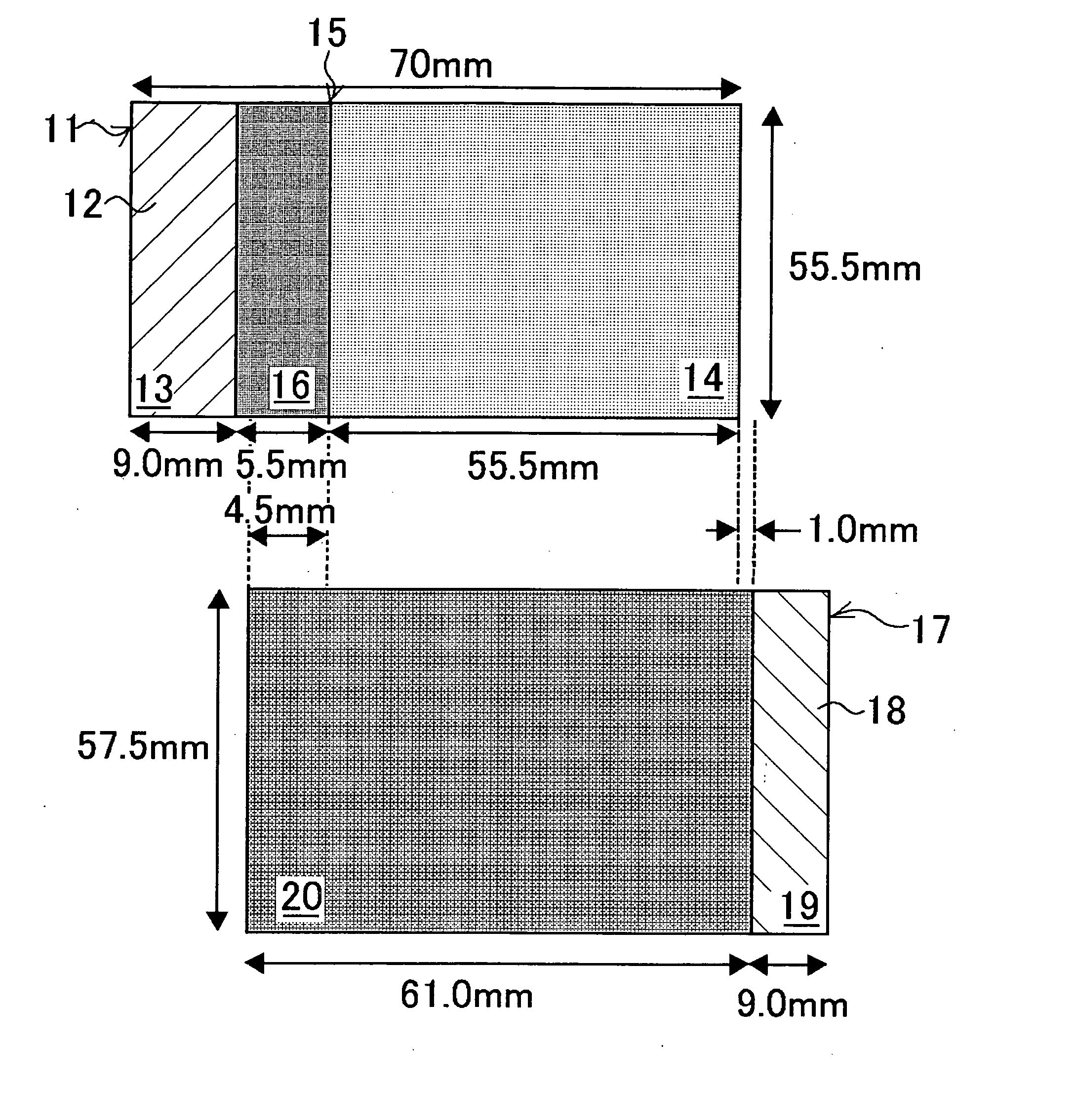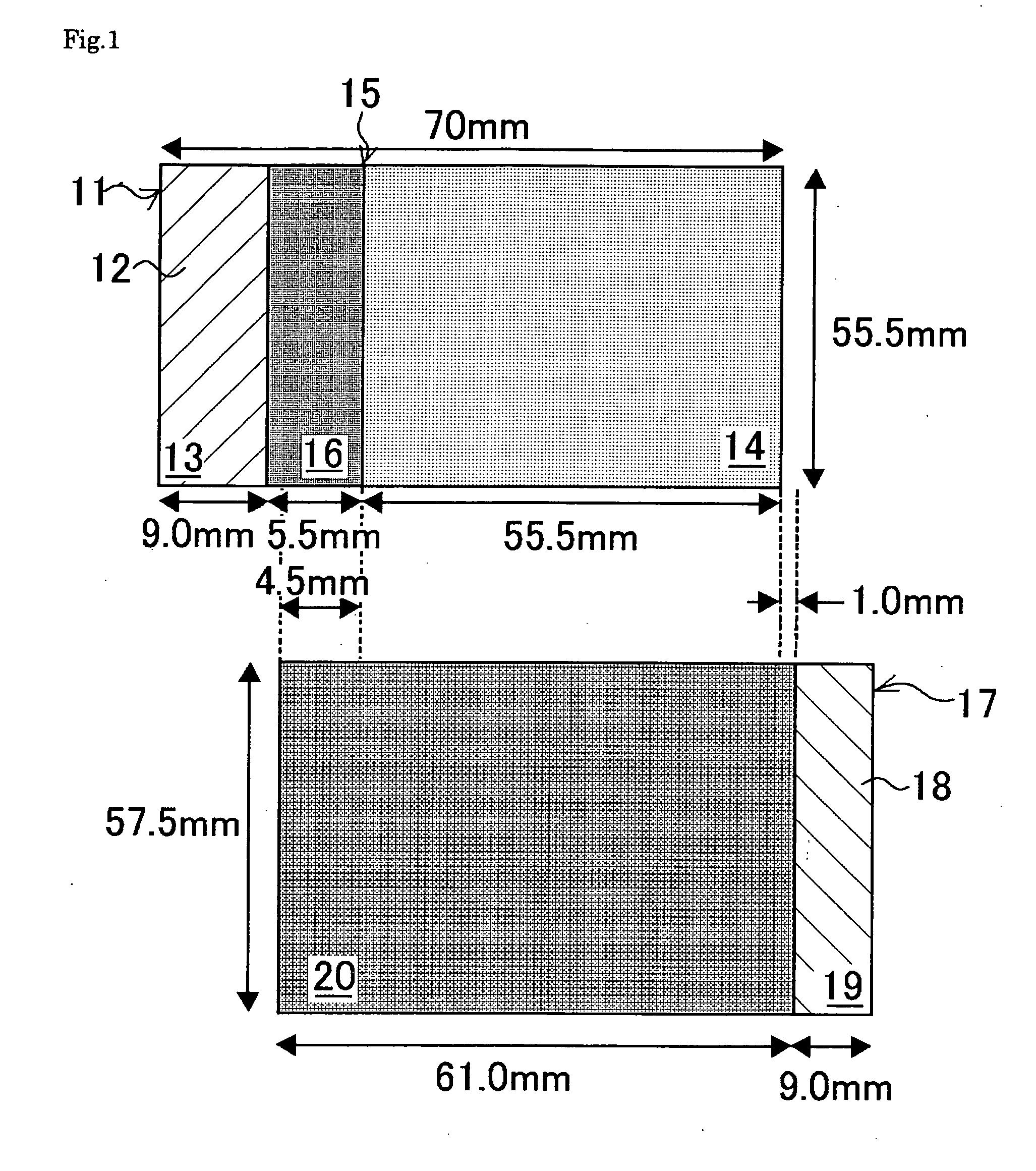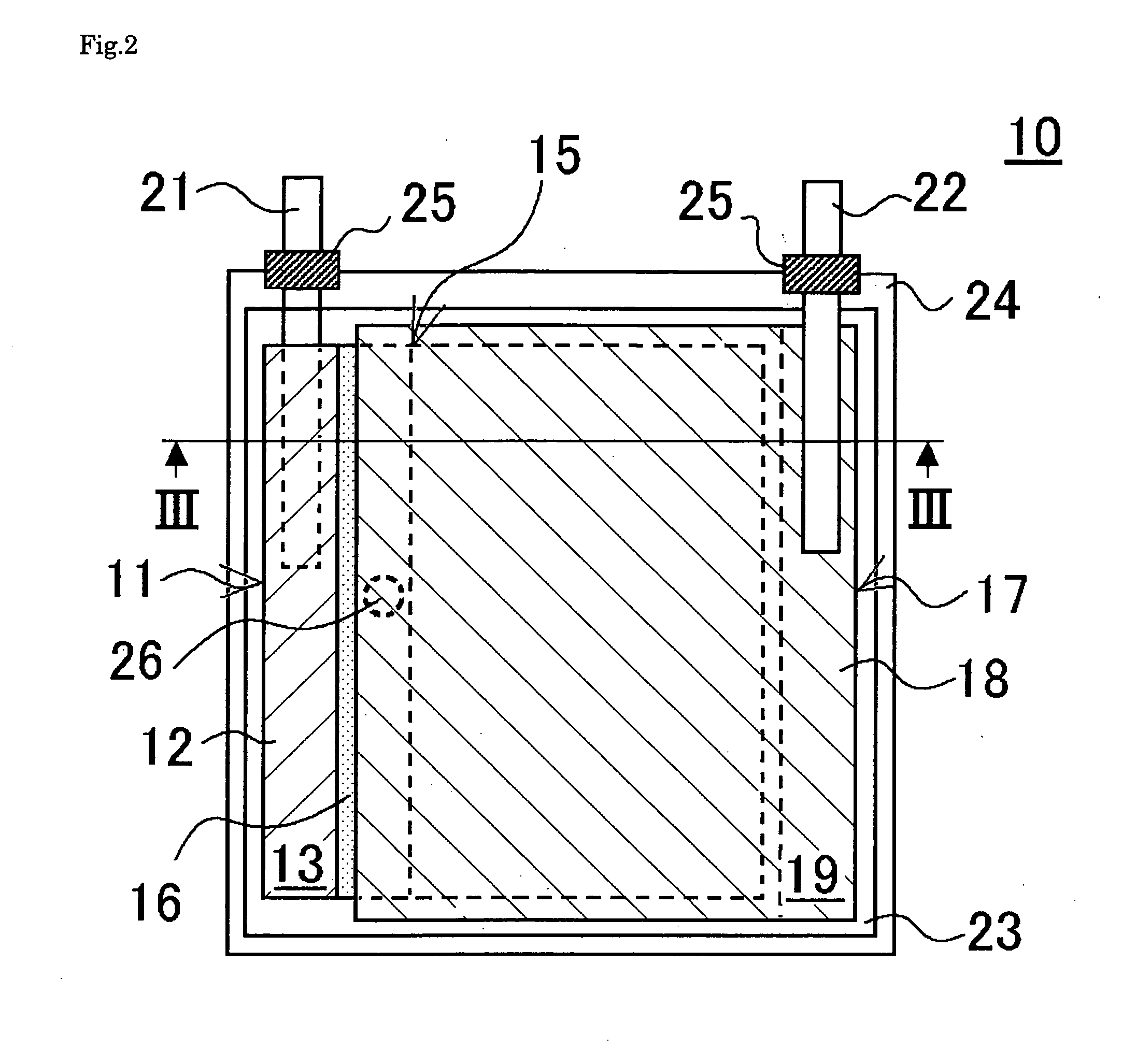Nonaqueous secondary battery
a secondary battery and non-aqueous technology, applied in the direction of cell components, final product manufacturing, sustainable manufacturing/processing, etc., can solve the problems of short circuit, shorten the life of the battery, and flow of heat generation, so as to achieve poor coatability and lower electronic conductivity
- Summary
- Abstract
- Description
- Claims
- Application Information
AI Technical Summary
Benefits of technology
Problems solved by technology
Method used
Image
Examples
first embodiment
[0068] First will be described, with reference to FIGS. 1 to 3, the method of fabricating a nonaqueous secondary battery that was used in the first embodiment. FIG. 1 is a plan view illustrating the electrode dimensions in the nonaqueous secondary battery of the first embodiment, FIG. 2 is a top view seen through the outer case, illustrating in outline the structure of the nonaqueous secondary battery of the first embodiment, and FIG. 3 is a cross-sectional view along III-III in FIG. 2.
(Fabrication of Positive Electrode)
[0069] The positive electrode 11 was fabricated as follows. First, an active material compound slurry was prepared by mixing 94% by mass of positive electrode active material composed of compound oxides of lithium, nickel, cobalt and manganese with 3% by mass of powdered acetylene black, graphite or other carbon and 3% by mass of a bonding agent constituted of polyvinylidene fluoride (PVdF), then adding N-methylpyrrolidone (NMP) to the resulting mixture and kneadi...
second embodiment
[0084] An active material compound slurry was prepared by mixing 94% by mass of positive electrode active material composed of compound oxides of lithium, nickel, cobalt and manganese with 3% by mass of powdered acetylene black, graphite or other carbon and 3% by mass of a bonding agent constituted of PVdF, then adding NMP to the resulting mixture and kneading it. This active material compound slurry was then applied evenly to one face of the positive electrode collector 12 made of 20 μm thick aluminum foil so as to leave, at the edges of the electrode, a portion 13 where the aluminum foil was exposed, thus forming a positive electrode plate coated with an active material layer 14. Following that, the positive electrode plate coated with the active material layer 14 was passed through a drying machine, where the organic solvent that had been needed for preparation of the slurry was removed and the plate was dried. Afterward, the dried positive electrode plate was rolled with a rolle...
third embodiment
[0086] In the third embodiment, a protective layer was fabricated using the same procedure as in the second embodiment except for the preparation of the protective material, which was prepared as follows. In an NMP solvent, 1 g of polyimide powder and 0.1 g of carbon powder with specific surface area 40 m2 / g were mixed into 20 g of binder solution containing 5% by mass of PVdF, and further NMP was added so that the whole mixture amounted to 25.1 g. As with the second embodiment above, the results of the experiments using optical sensors are compiled alongside those of other embodiments in Table 3.
PUM
 Login to View More
Login to View More Abstract
Description
Claims
Application Information
 Login to View More
Login to View More - R&D
- Intellectual Property
- Life Sciences
- Materials
- Tech Scout
- Unparalleled Data Quality
- Higher Quality Content
- 60% Fewer Hallucinations
Browse by: Latest US Patents, China's latest patents, Technical Efficacy Thesaurus, Application Domain, Technology Topic, Popular Technical Reports.
© 2025 PatSnap. All rights reserved.Legal|Privacy policy|Modern Slavery Act Transparency Statement|Sitemap|About US| Contact US: help@patsnap.com



